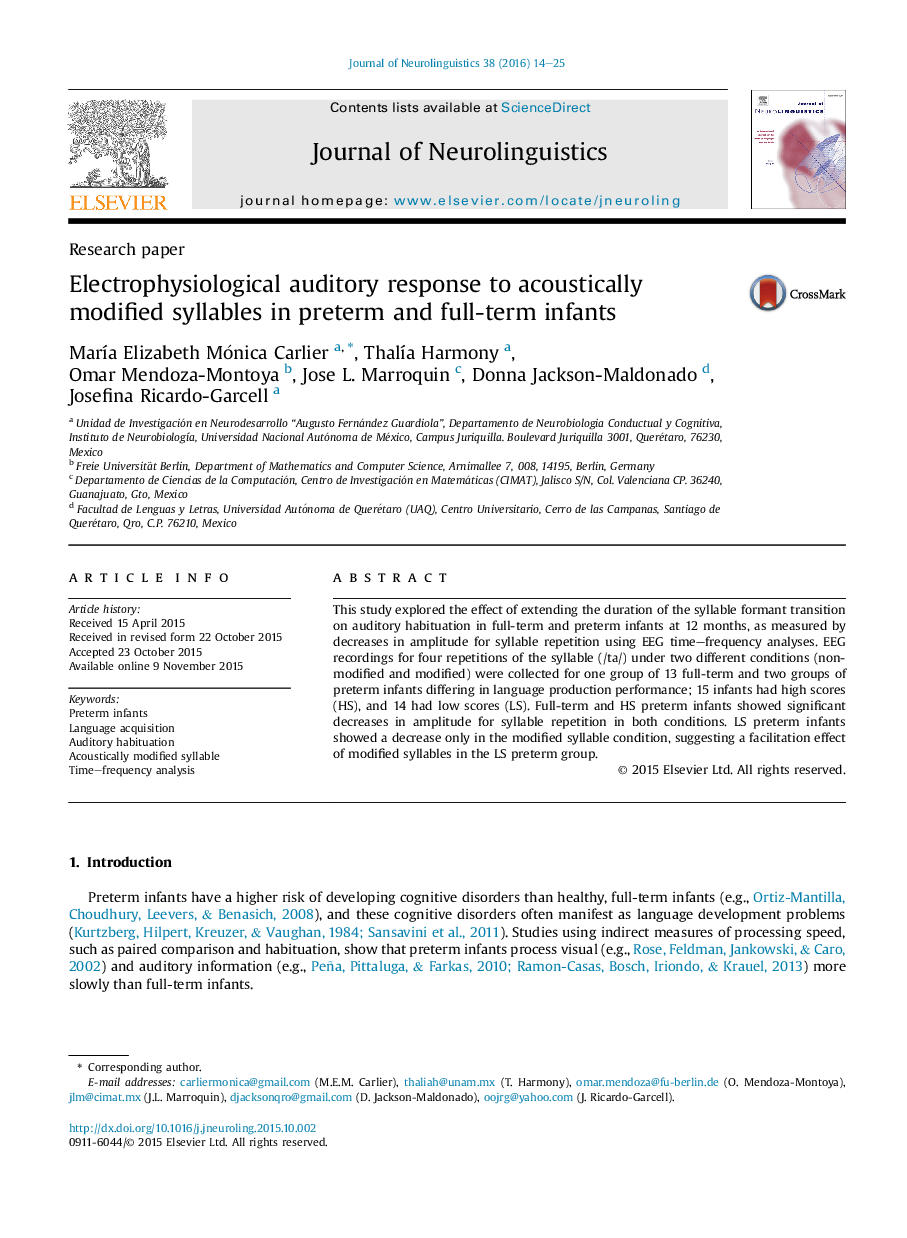| کد مقاله | کد نشریه | سال انتشار | مقاله انگلیسی | نسخه تمام متن |
|---|---|---|---|---|
| 911735 | 1473169 | 2016 | 12 صفحه PDF | دانلود رایگان |
• The study provides EEG time–frequency measures of the habituation effect in term and preterm infants.
• The absence of the EEG measure of the habituation effect is an early predictor of language problems.
• Prolonged syllables facilitate syllable processing in at-risk infants.
• The study reveals alternatives for early detection and intervention for at-risk infants.
This study explored the effect of extending the duration of the syllable formant transition on auditory habituation in full-term and preterm infants at 12 months, as measured by decreases in amplitude for syllable repetition using EEG time–frequency analyses. EEG recordings for four repetitions of the syllable (/ta/) under two different conditions (non-modified and modified) were collected for one group of 13 full-term and two groups of preterm infants differing in language production performance; 15 infants had high scores (HS), and 14 had low scores (LS). Full-term and HS preterm infants showed significant decreases in amplitude for syllable repetition in both conditions. LS preterm infants showed a decrease only in the modified syllable condition, suggesting a facilitation effect of modified syllables in the LS preterm group.
Journal: Journal of Neurolinguistics - Volume 38, May 2016, Pages 14–25
